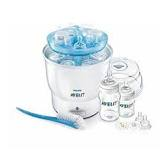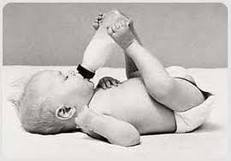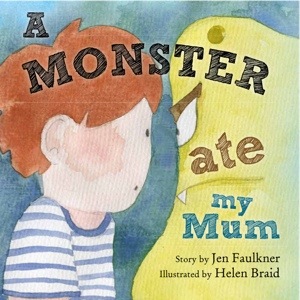 Some women are unable or unwilling to breastfeed, and for those of you that have chosen to bottle feed, for whatever reason, we show you the right way to do it.
Some women are unable or unwilling to breastfeed, and for those of you that have chosen to bottle feed, for whatever reason, we show you the right way to do it.
We would like to mention here that it is important to be aware that if you begin to bottle feed your baby, it can be difficult to switch to breastfeeding if you later decide to change your feeding method. However, bottle feeding, using either expressed breast milk or infant formula milk is a perfectly healthy way to feed your baby.
 Expressing breast milk involves encouraging milk to flow from your breast using your hand or a breast pump so that you can use it to feed your baby from a bottle.
Expressing breast milk involves encouraging milk to flow from your breast using your hand or a breast pump so that you can use it to feed your baby from a bottle.
If you look in our breastfeeding section- there you will find information on expressing breast milk to use in a bottle.
Infant formula milk usually comes in powder form. It contains the right balance of vitamins and minerals for a young baby and has been specially treated so that it can be easily digested.
Infant formula milks are not sterile so it is very important that you follow strict sterilising procedures before using them.
What you’ll need:
5 bottles (to avoid lots of washing!)
5 Teats
Bottle brush
Baby Formula
Steriliser
 Sterilising
Sterilising
Babies do not have fully developed immune systems so it is very important to thoroughly sterilise all of their feeding equipment (including bottles, teats, beakers and pumps) to protect them against infection.
This is especially important for babies who are predominantly bottle fed with formula milk as they do not receive the enhanced immunity provided by breast milk and so are more susceptible to infection.
Before sterilising your feeding equipment it is important to wash it. you must also wash your hands before handling any of your baby’s equipment.
 Washing your bottles
Washing your bottles
Feeding equipment you need to wash it thoroughly in hot soapy water.
You should use a bottle brush to clean off any remnants of milk and ensure that the teats are clean by washing both sides and then running water through the hole.
It is possible to clean feeding equipment in the dishwasher however this should always be on the hottest setting (teats are more likely to wear if frequently washed in this manner).
Whether you clean your baby’s feeding equipment in the dishwasher or by hand you should check to ensure all traces of milk and detergent have been removed before sterilising.
Sterilising your bottles:
There are various ways of sterilising your feeding equipment, whichever you choose, ensure you follow the instructions correctly.
Boiling – This is the traditional method of sterilising bottles and one which has been taken over by modern forms of sterilising kit!
You should use a saucepan that has not been used for any other purpose (i.e. cooking), fill it with water and fully submerge the bottles inside. You will need to boil the equipment for at least 10 minutes.
Steaming – Steam sterilisers are readily available and are an efficient way to ensure that bottle feeding equipment is safe to use. They only take approximately 8 minutes to work and if sealed can keep equipment clean for up to 3 hours.
Sterilising solutions – These often come in the form of a tablet which you dissolve in cold water. They take approximately half an hour to work (although you should check individual instructions) and often allow you to leave bottles soaking for up to 24 hours if sealed, although you shouldn’t leave them longer than this without changing the solution.
It is possible to use any container with a sealed, fitted lid however special sterilising containers with plungers that keep bottles fully submerged are also readily available.
Microwavable sterilisers – Steamers for use in the microwave are available although you cannot use them to clean equipment with metal components. Additionally self-sterilising microwavable bottles are also available.
Checking your feeding equipment:
When sterilising bottles and other feeding equipment you should ensure they are fully submerged for the whole time and check that there are no air bubbles present.
Additionally, you should dispose of bottles and teats once they are showing signs of wear and tear as they become more difficult to fully sterilise once cracks are starting to form in the plastic.
After you remove your baby’s feeding equipment from your chosen sterilisation container you should fill it with milk as soon as possible to avoid contamination.
When to stop sterilising:
Current guidelines suggest that you continue sterilising your baby’s bottle feeding equipment until they reach 1 year of age.
 Making up a feed:
Making up a feed:
*Make up powdered formula milk fresh for each feed. If you are out for the day, use an insulated container to store freshly boiled water and mix up with formula when you need it.
*It’s very important to make sure that the milk powder and water are measured accurately. If the feed is too weak, your baby will be hungry and will not put on weight. If the feed is too strong, your baby will become dehydrated and very thirsty; she may then cry more, and if you offer her more strong feed she will get more dehydrated and may become ill.
Fill the kettle with fresh water, bring to the boil and allow it to cool slightly; ideally the water should be between 70 and 90 degrees C, so use boiled water that has been left to cool for no more than half an hour.
Check the amount of water needed and the number of scoops of powder to use on the packet. (This will be marked clearly in the feeding table on the side of the box/tin.)
Pour the required amount of water into each bottle.
Check the water level in the bottle; stand the bottle on the worktop and crouch down so you can see the water level is in line with the marking on the side of the bottle. If you look from above it may not be accurate.
Put the powder into the bottle- count out loud each scoop you put in- it’s easy to put in too many and this could make your baby ill!
Place the disc on the neck of each bottle and screw the cap on tightly.
Shake carefully to mix the powder. Before feeding your baby, test the temperature of the formula milk. you can do this by pouring a few drops onto your wrist.
*If you need to, cool the milk by holding the bottle, with a cap covering the teat, under cold running water.
 Feeding your baby a bottle:
Feeding your baby a bottle:
Feeding your baby is a special time. Time for bonding and a quiet time for you together. Lots of mothers who choose to bottle feed feel that they will loose the bond with their baby, but this isn’t true at all, so please don’t worry.
To bottle feed your baby:
1) Sit comfortably with your baby on your lap. Make eye contact with her and enjoy the opportunity to have a cuddle.
2) Gently stroke the teat on your baby’s check and she should turn towards it and take it into her mouth.
3) Hold the bottle firmly as your baby feeds and tilt it so the end of the teat is full of milk, not air. If the teat collapses, move it gently around her mouth to let air back into the bottle. If your baby won’t let go, carefully slide a clean finger between her gums and alongside the teat to break the suction.
*Never leave your baby propped up with a bottle as she may choke.
4) When you are half way through a feed, take the bottle away from your baby and sit her up to be winded.Do this by gently sitting her up on your lap with one hand cupping her chin, or put her over your shoulder, and gently rub or pat her back.
She should give a good burp or two and bring up a little milk, so protect your clothes with a bib or muslin square. After winding, continue with the feed as before, and repeat the winding process when she has finished her feed.




Recent comments